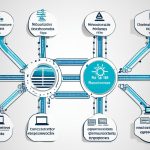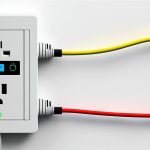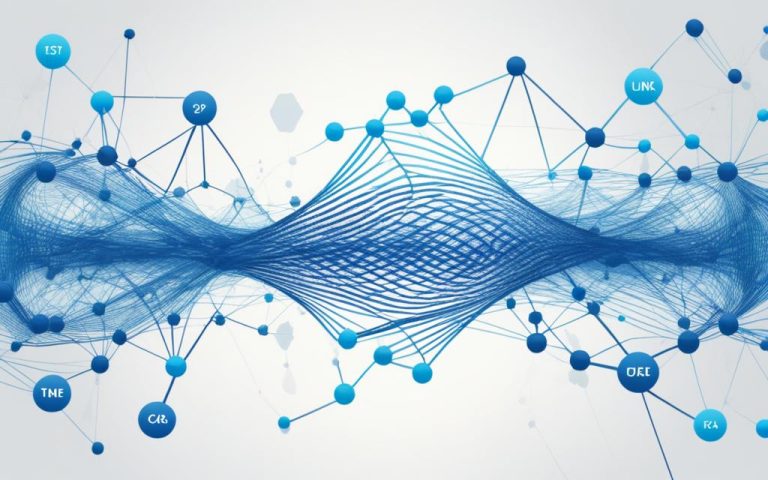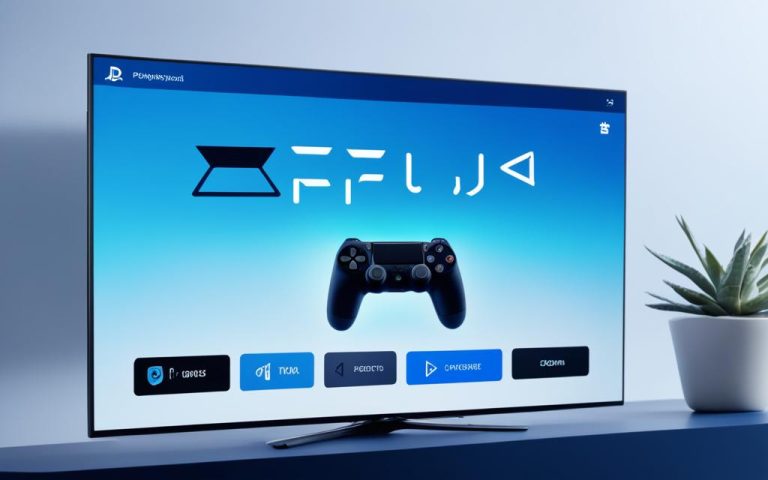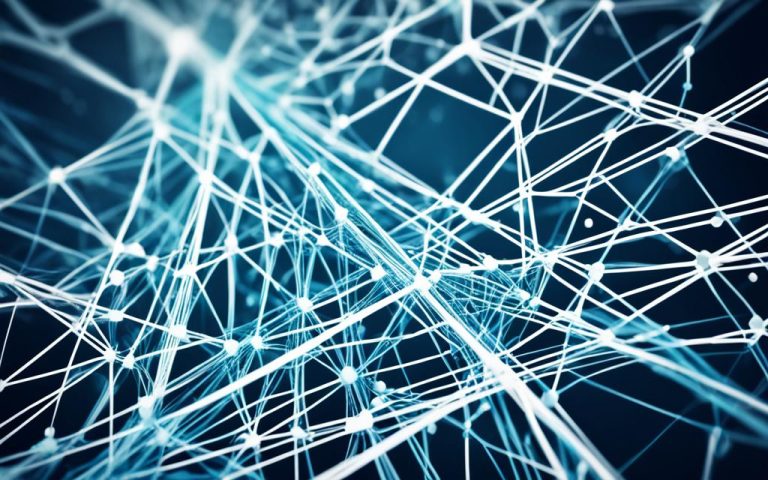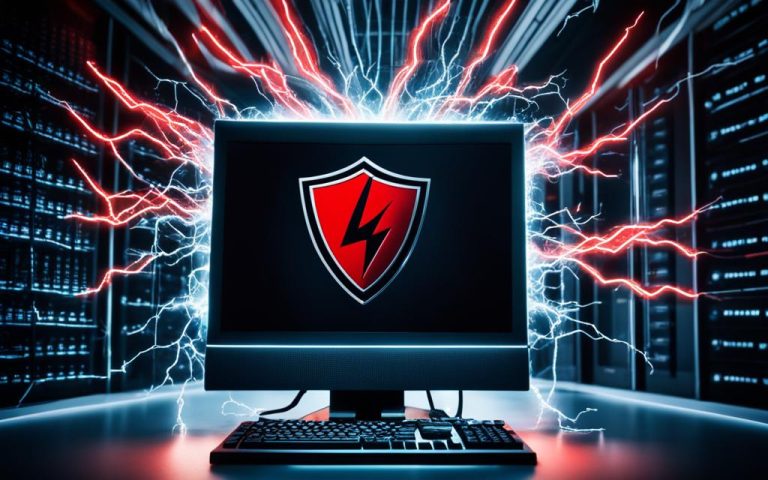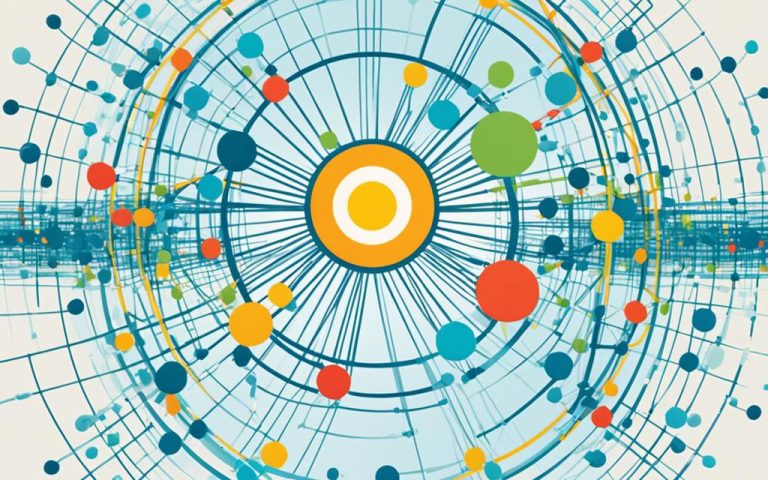Chiari network is a cardiac anomaly that can pose risks and safety concerns. It’s not inherently dangerous but can cause complications that affect health. Let’s dive into the details.
Key Takeaways:
- Chiari network is a cardiac anomaly that requires careful consideration and monitoring.
- While it is not inherently dangerous, it can lead to complications that impact health.
- Surgical intervention may be necessary in some cases to address associated conditions or symptoms.
- Pre-operative evaluation, including imaging tests such as MRI and CT scans, helps diagnose and assess the severity of Chiari network.
- Postoperative care and regular follow-up exams are crucial to monitor the outcomes of the surgical procedure and ensure optimal cerebrospinal fluid flow.
According to statistical data1 from various sources, MRI is often used to diagnose Chiari malformation. It provides detailed 3D images of the brain’s structure, showing what causes symptoms.
CT scans are also used1 to check for brain tumors, damage, bone, blood vessel problems, and other issues linked to Chiari malformation.
Surgery for Chiari malformation, called posterior fossa decompression, removes a small skull section. This helps relieve pressure on the cerebellum and spinal cord1. But, surgery comes with risks like infection, fluid in the brain, cerebrospinal fluid leakage, or wound healing problems1.
After surgery, proper care is key for those with Chiari malformation. Regular check-ups with doctors and imaging tests are needed. They help check how the surgery went and the cerebrospinal fluid flow1.
Mayo Clinic in Rochester, Minnesota, Phoenix/Scottsdale, Arizona, and Jacksonville, Florida, is among the top Neurology & Neurosurgery hospitals in the U.S. News & World Report for 2023-20241.
Understanding Chiari Network
The Chiari network is a rare heart condition. It involves a membrane-like structure in the right atrium. It’s often found by accident during heart tests.
This condition can be harmless or cause serious heart problems. Most people with it don’t show symptoms. But, some may experience irregular heartbeats.
An 11-year-old boy felt his heart racing and passed out. Tests showed his heart was beating irregularly. An echo scan found a Chiari network in his heart, moving with each heartbeat.
Studies2 show Chiari networks are found in 2-10% of people. They can sometimes cause problems during heart surgeries. The network might also help prevent blood clots.
Removing a Chiari network is not usually needed if it’s not causing problems. But, it can lead to complications during heart surgeries.
Before heart procedures, it’s important to check for a Chiari network. This helps avoid complications during the surgery.
| Statistical Data | Percentage |
|---|---|
| Prevalence in patients undergoing transesophageal echocardiography | 2% |
| Presence of patent foramen ovale in patients with Chiari’s network | 83% |
| Occurrence of intense right-to-left shunting in patients with Chiari’s network | 55% |
| Frequency of atrial septal aneurysm in patients with Chiari’s network | 24% |
| Association of embolic events with Chiari’s network in patients with a Chiari net | 54% |
| Common indication for transesophageal echocardiography in patients with Chiari’s network | Suspected cardiac source of arterial embolism: 83% |
| Chiari’s network prevalence in patients with unexplained arterial embolism compared to other indications | 4.6% vs. 0.5% |
| Presence of potential causes for arterial embolism in patients with Chiari’s network and embolic events | Atrial septal aneurysm in 7 cases, cerebrovascular lesion in 2 cases |
| Identification of only a patent foramen ovale as a cause in patients with Chiari’s network and embolic events | 62% |
| Co-occurrence of deep venous thrombosis and pulmonary embolism with arterial embolism | In 3 cases |
Prevalence of Chiari Network
The Chiari network is a complex structure found in the right atrium of the heart. It’s often seen by chance but has caught the eye of researchers lately. They’re looking into how common it is and its links to heart conditions and problems.
Studies after death show that about 2% to 13.6% of people with heart issues have a Chiari network3. These numbers give us a glimpse into how often this structure appears in people.
Even though it’s usually harmless, the Chiari network can lead to serious issues. Problems like blood clots, infections, and abnormal heart rhythms have been linked to it3. It’s seen in heart scans and after death, showing up in 2% to 13.6% of cases3. This calls for more research to understand its risks and effects.
There have been cases where the Chiari network trapped blood clots from a faulty blood filter4. Also, it can cause a specific heart valve problem, as found in a study by Chang J-P4.
Diagnosing the Chiari network can be tricky. It might look like a blood clot or a mass in the heart, leading to wrong diagnoses35. This mistake can greatly affect how a patient is treated and their health outcomes5.
The Chiari network is often found with other heart issues, like a hole in the heart or an enlarged heart septum3. These connections add to the complexity and importance of understanding the Chiari network in heart health.
As we learn more about the Chiari network, its widespread presence and effects become clearer. More research is needed to fully grasp its role in blood clots, embolisms, and related heart problems. This knowledge will help improve how doctors treat patients with these conditions.
Source: Mousavi N. et al., 2008; Dregoesc D. et al., 2013; Goedde T. A. et al., 1990; Schneider B. et al., 1995; Yater W. M., 1936; Bhatnagar K. P. et al., 2006; Chang J-P., 2012
Complications and Safety Concerns
Chiari network itself is not dangerous. But, it can lead to complications and safety issues6. Sometimes, it raises the risk of blood clots and embolic events6. These can seriously affect health and might need medical treatment.
Complications Associated with Chiari Network
Chiari network complications differ from person to person6. Some possible issues include:
| Complication | Description |
|---|---|
| Cerebral thrombosis | Chiari network can sometimes block blood flow, raising the chance of thrombosis and stroke6. |
| Embolic events | Chiari network might increase the risk of embolic events. These happen when blood clots or particles block smaller blood vessels6. |
| Neurological deficits | Chiari network can put pressure on nearby structures, causing neurological problems like weakness, numbness, or odd reflexes6. |
| Syrinx formation | Chiari network can lead to a syrinx, a fluid-filled cavity in the spinal cord. This can cause pain, sensory issues, and problems with moving6. |
People with Chiari network should know about these risks. They should get regular check-ups and care to catch health issues early6.
Diagnosis of Chiari Network
To diagnose Chiari network, doctors use imaging tests. Magnetic resonance imaging (MRI) is the top choice because it shows detailed 3D images of the heart. This helps doctors see the Chiari network clearly7.
Other tests like computerized tomography (CT) scans might also be done. They give more info and help rule out other health issues8. These tests help tell the Chiari network apart from other heart problems, making sure the diagnosis is right.
MRI is great because it shows the Chiari network’s size, shape, and where it is. This info is key for making a treatment plan and keeping patients safe7.
Doctors also look at other health issues and possible problems during diagnosis. They check for things like a patent foramen ovale (PFO) and atrial septal aneurysm. These are often found in people with Chiari network79.
Diagnostic Imaging Tests for Chiari Network
Imaging tests are crucial for finding a Chiari network and telling it apart from other heart issues. Here are the main tests used:
- Magnetic Resonance Imaging (MRI): This test uses strong magnets and radio waves to make detailed heart images. It’s the best way to see the Chiari network7.
- Computerized Tomography (CT) Scan: CT scans use X-rays and computers to make heart images. They give more info and help rule out other health problems8.
These tests help doctors diagnose Chiari network, understand its features, and plan treatment. They also look at other health issues and problems for a full picture of the patient’s health79.
Treatment Options for Chiari Network
Treating Chiari network depends on symptoms and complications. If symptoms or cardiac issues are present, surgery might be suggested. The main surgery is called posterior fossa decompression. It removes a small skull bone part to ease brain and spinal cord pressure8.
This surgery helps relieve symptoms and boost life quality for Chiari network patients. It makes the skull space bigger, easing brain and spinal cord compression. This reduces headaches, neck pain, and dizziness10.
Choosing surgery for Chiari network should involve a neurosurgeon expert in Chiari malformation. Weighing surgery’s benefits against risks is crucial, considering your situation and symptom severity. Understanding the surgery, recovery, and possible issues is also key11.
Not everyone with Chiari malformation needs surgery. Some may not have symptoms and can be watched closely. Yet, regular check-ups are vital for catching and treating problems early8.
People with Chiari network should talk to their healthcare provider about the best treatment. This might include pain medicines to help with symptoms and improve life quality. Every case is different, so personalized care is important for the best outcomes10.
Potential Risks of Surgery
Surgery for Chiari network comes with risks and complications. It’s key for patients to know these risks before deciding. This helps them make an informed choice.
One risk is infection. Surgery increases the chance of infection, which can lead to serious issues. Using antibiotics and proper sterilization helps lower this risk.
Another risk is cerebrospinal fluid leakage. The Chiari network is near the cerebrospinal fluid. Surgery might accidentally damage tissue, causing fluid leakage. This can lead to meningitis or more surgery to fix the leak.
Some patients may face issues with wound healing after surgery. This can mean a longer recovery and more complications.
Healthcare providers must talk about these risks with patients before surgery. Knowing the risks helps patients make informed decisions and take steps to avoid complications.
Risks Associated with Chiari Network
Chiari network also has risks beyond surgery. It can keep a patent foramen ovale open, raising the risk of blood clots and strokes12. Studies link it to heart problems, including valve issues and arrhythmia12.
When thinking about surgery for Chiari network, it’s vital to look at the patient’s overall health. This helps decide the best course of action and reduce risks.
Cases of Chiari Network Endocarditis
Chiari network endocarditis is rare but serious. It often needs surgery to remove the network because of infection risks13. Spotting signs like Janeway lesions is key to catching infections early13.
In some cases, Chiari network endocarditis focuses on the right side without affecting the tricuspid valve13. This shows the importance of watching for and treating infections in patients with Chiari network.
Prevalence of Chiari Network
Chiari network affects 2% to 10% of people, based on studies14. More research is needed to understand its impact on complications during procedures14. Healthcare providers should consider these risks when deciding on surgery for Chiari network.
Summary of Risks and Complications
| Risk/Complication | Description | Statistical Data |
|---|---|---|
| Infection | Risk of post-surgical infection | Link 112 |
| Cerebrospinal Fluid Leakage | Potential leakage of cerebrospinal fluid | N/A |
| Wound Healing Difficulties | Delayed wound healing or wound infections | N/A |
| Thrombotic and Embolic Complications | Increased risk due to Chiari network | Link 112 |
| Valvular Dysfunction | Association with Chiari network | Link 112 |
| Endocarditis | Association with Chiari network | Link 112, Link 213 |
| Arrhythmia | Association with Chiari network | Link 112 |
| Catheter-Trapping | Association with Chiari network | Link 112 |
It’s important for patients and doctors to talk about the risks and benefits of Chiari network surgery. Each situation is different. Deciding on surgery should be based on a full review of the patient’s health and risks.
Long-Term Outlook and Follow-Up Care
After removing a Chiari network, it’s key to keep an eye on the patient’s health to stop symptoms from coming back. Regular checks and tests help see if the surgery worked well and keep the patient healthy.
People who have Chiari malformation surgery need ongoing care to check on their health and catch any signs of problems early. Regular visits and tests are important to make sure the surgery helped and to spot any signs of symptoms coming back. Catching problems early is key to managing them well.
At follow-up visits, doctors look at how the patient is doing and what their future looks like. They check the patient’s nerves, look for new symptoms, and make sure the surgery area is stable. Tests like MRI might be done to see how the brain and spine are doing.
A study showed that after four years, a boy who had surgery for Chiari network didn’t have more heart rhythm or fainting issues15. This shows how important regular check-ups are in managing any issues after surgery and keeping things going well.
Follow-up care also focuses on managing symptoms of Chiari malformation. Symptoms can include headaches, balance problems, muscle weakness, and syringomyelia15. By watching these symptoms closely, doctors can help manage them better and improve the patient’s life quality.
Follow-up care is also key in spotting and handling any surgery complications. Even though rare, issues like infection, cerebrospinal fluid leaks, or spinal fluid buildup can happen. Regular visits help catch these problems early so they can be treated quickly.
The long-term outlook for Chiari malformation depends on the type of malformation. Type I usually means a normal life span with the right treatment. But Type II, III, and IV can be more serious16. Type II often comes with spina bifida and can lead to hydrocephalus, which needs ongoing care.
How long follow-up care lasts depends on the patient and their surgery type. Usually, patients will keep having regular check-ups for a few years after surgery. This helps keep an eye on their health and spot any signs of problems or symptoms coming back.
Patients should stay active in their care by going to appointments, telling doctors about any new symptoms, and following advice on lifestyle changes. Being involved in their care helps them stay healthy and manage their condition better.
Recovery from Chiari malformation surgery can take weeks, with some symptoms lasting up to a year17. Long-term follow-up care offers ongoing support and ensures patients get the right treatment for the best outcomes.
For people who have had surgery for Chiari malformation, ongoing follow-up care is vital. It helps monitor progress, handle complications, and manage symptoms. Regular check-ups, tests, and talking with doctors are key parts of care after surgery for Chiari malformation.
Additional Considerations for Chiari Network
Chiari network can affect the heart and cause other issues. But, each patient’s situation is unique. The choice to intervene should be based on a careful review of their specific needs.
It’s important to know how common Chiari malformations are. Chiari type 1 is found in about 0.1 to 0.5% of people, which means around 1 million in the U.S18. It’s more common in women18. Chiari type 2 is found in all kids with myelomeningocele18.
Chiari types 3 and 4 are very rare and usually don’t make it past birth18. Most of the time, they don’t cause problems18. Chiari malformations don’t change from one type to another18.
For Chiari malformations, surgery is not always the first option. Pain relief for headaches and neck pain is often the first step18. Some people with Chiari malformations might not need surgery. They can be watched closely instead18.
But, not treating Chiari malformations can lead to serious problems like hydrocephalus and nerve damage18. Waiting too long can cause permanent nerve harm18. Doctors must weigh the risks and potential for worsening the condition when deciding on treatment.
To diagnose Chiari malformations, doctors use a brain MRI and other tests like sleep studies and spinal MRI18. These tests help see how bad the malformation is.
If surgery is needed, it aims to relieve pressure by removing bone, opening the dura, and improving fluid flow18. Surgery is usually safe and successful in skilled hands18.
After surgery, patients stay in the hospital for 3 to 4 days to recover18. Keeping up with follow-up care is key for those with Chiari malformations.
In summary, managing Chiari network requires considering many factors. This includes knowing about Chiari types, treatment options, and surgery risks. A careful evaluation and understanding of each patient’s situation should guide treatment choices.
Latest Research and Advancements
The field of cardiology is seeing new research and progress in Chiari network. Researchers are looking into new treatments, checking long-term results, and improving patient care. It’s key for healthcare providers to know about the latest advancements in Chiari network research to make better decisions and improve treatment outcomes19.
Prevalence of Chiari Network
Chiari malformation type I (CM-I) affects about 1 in 1000 to 5000 people20. Studies using MRI have found more cases of CM-I than before, showing we need better numbers20.
Impact on Cognitive Functioning
CM-I patients often struggle with thinking skills. Studies show it’s important to look at how their minds work. They might have trouble with thinking, spatial skills, language, and personality20.
Recent studies found differences in brain connections in CM-I patients. These differences affect thinking and pain. Knowing this helps doctors understand CM-I patients better20.
Treatment Options and Outcomes
Surgery is a common treatment for CM-I. It helps relieve symptoms. Researchers are looking at different surgery types to see which works best19.
They found that about 60% to 85% of CM-I patients with syringomyelia got surgery19.
There’s also a new device called the Amplatzer PFO Occluder for treating CM-I. It was first used in 1997 and has been very successful21.
This procedure is done in less than 30 minutes and can be done the same day. Afterward, patients get follow-up tests to check for any issues21.
Keeping up with new research helps doctors understand Chiari network better. This leads to better treatments and care for patients19.
Conclusion
Chiari network brings risks and safety concerns that doctors must think about. Studies show it affects 2-3% of people9. Over 80% of those with Chiari also have a patent foramen ovale922. This combo raises the risk of paradoxical emboli and stroke9.
Tests like three-dimensional echocardiography help tell Chiari apart from other issues9. Most people find out they have Chiari by accident9. But, it can lead to blood clots and heart infections, so it’s important to watch out922.
Treatment for Chiari depends on the symptoms and risks. Closing a patent foramen ovale (PFO) through a procedure has shown to lower stroke risk23. Studies prove this method is better than just using drugs23. This method has cut down on strokes, making it a good choice23.
Keeping a close eye on patients with Chiari is key for their health. Doctors should stay updated with new research to give the best care. By understanding the risks, safety issues, and treatment options, doctors can make smart choices for their patients92223.
FAQ
What is Chiari network?
Chiari network is a heart anomaly. It has a membrane-like structure in the right heart chamber.
Is Chiari network dangerous?
Chiari network isn’t usually dangerous on its own. But, it can lead to complications and safety issues.
What complications can Chiari network cause?
Chiari network might increase the risk of blood clots and embolic events. These can seriously affect health.
How is Chiari network diagnosed?
Doctors use imaging tests like MRI and CT scans to diagnose Chiari network.
What are the treatment options for Chiari network?
Surgery, like posterior fossa decompression, is often used to treat Chiari network. It’s done if symptoms or other heart problems occur.
What are the potential risks of surgery for Chiari network?
Surgery risks include infection, cerebrospinal fluid leaks, and trouble with wound healing.
How is the long-term outlook for Chiari network?
Keeping an eye on the patient’s health is key. Regular tests and check-ups help manage symptoms and prevent future problems.
Do all cases of Chiari network require intervention?
Not every Chiari network case needs treatment. Sometimes, just watching and managing symptoms is best.
What is the latest research and advancements in the field of Chiari network?
Researchers are looking into new treatments and long-term effects of Chiari network. They aim to improve patient care.
Source Links
- https://www.mayoclinic.org/diseases-conditions/chiari-malformation/diagnosis-treatment/drc-20354015 – Chiari malformation – Diagnosis and treatment – Mayo Clinic
- https://www.journalmc.org/index.php/JMC/article/view/2424/1898 – Detecting Chiari Network in Patients to Avoid Procedural Complications | Arshed
- https://jag.journalagent.com/nci/pdfs/NCI_4_3_270_272.pdf – PDF
- https://www.ncbi.nlm.nih.gov/pmc/articles/PMC4983347/ – The Presence of a Large Chiari Network in a Patient with Atrial Fibrillation and Stroke
- https://www.sciencepublishinggroup.com/article/10.11648/j.ajim.20190702.12 – Chiari Network – Just an Innocent Bystander or Can Have Serious Impact on Clinical Outcomes
- https://uchealth.staywellsolutionsonline.com/Library/DiseasesConditions/Adult/134,257 – Chiari Malformation Type I
- https://www.ncbi.nlm.nih.gov/pmc/articles/PMC3351634/ – Unusual association of diseases/symptoms: Chiari network: a protective filter against pulmonary embolism in a case of polycythaemia
- https://www.mayoclinic.org/diseases-conditions/chiari-malformation/symptoms-causes/syc-20354010 – Chiari malformation – Symptoms and causes
- https://www.oatext.com/a-case-of-chiari-network-and-paradoxical-emboli.php – A case of Chiari network and paradoxical emboli
- https://centenoschultz.com/condition/chiari-malformation/ – Chiari Malformation
- https://www.princetonbrainandspine.com/conditions/brain/chiari-malformation/ – Chiari Malformation Treatment NJ | Brain Doctors & Specialists in New Jersey
- https://www.ncbi.nlm.nih.gov/pmc/articles/PMC8828961/ – Chiari network and patent foramen ovale associated with stroke
- https://www.ncbi.nlm.nih.gov/pmc/articles/PMC5611810/ – Chiari Network and Aortic Valve Endocarditis with Concurrent Pulmonary and Systemic Embolization
- https://www.sciencedirect.com/science/article/abs/pii/S0167527322019362 – Chiari network for the interventional cardiologist: A hidden enemy at the heart gate – A systematic review of the literature
- https://rarediseases.org/rare-diseases/chiari-malformations/ – Chiari Malformations – Symptoms, Causes, Treatment | NORD
- https://www.emedicinehealth.com/is_having_a_chiari_malformation_life_threatening/article_em.htm – Is Having a Chiari Malformation Life Threatening? Stages
- https://www.neurosurgeonsofnewjersey.com/blog/after-chiari-malformation-surgery/ – After Chiari Malformation Surgery: What to Expect
- https://www.uclahealth.org/medical-services/pediatric-neurosurgery/conditions-treatment/pediatric-chiari-and-syringomyelia-program/frequently-asked-questions – Frequently Asked Questions
- https://www.frontiersin.org/journals/neurology/articles/10.3389/fneur.2023.1274971/full – Frontiers | A long-term follow-up study of adults with Chiari malformation type I combined with syringomyelia
- https://link.springer.com/article/10.1007/s11065-023-09622-2 – Cognition in Chiari Malformation Type I: an Update of a Systematic Review – Neuropsychology Review
- https://www.mdpi.com/2077-0383/13/11/3355 – Every Patent Foramen Ovale Should Be Closed
- https://pubmed.ncbi.nlm.nih.gov/7797753/ – Chiari’s network: normal anatomic variant or risk factor for arterial embolic events? – PubMed
- https://www.revespcardiol.org/en-pfo-cryptogenic-stroke-when-should-articulo-S188558571830481X – PFO and Cryptogenic Stroke: When Should It Be Closed? | Revista Española de Cardiología




